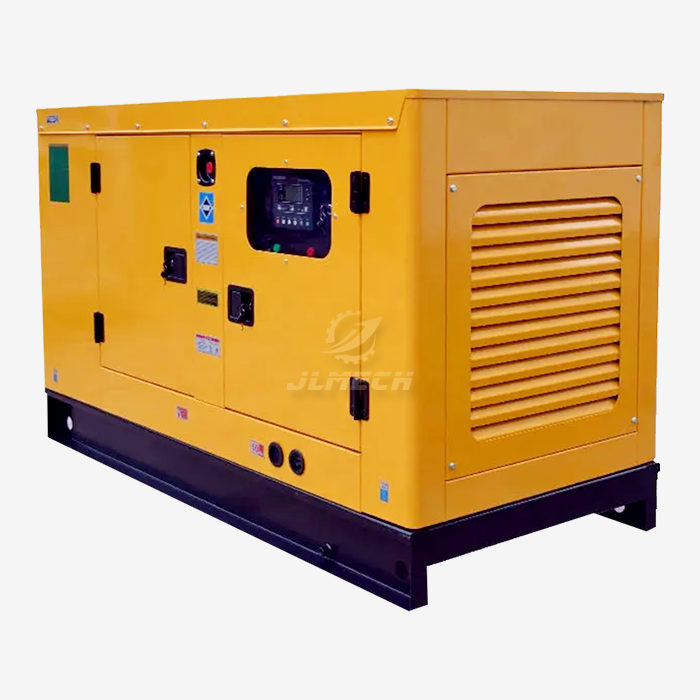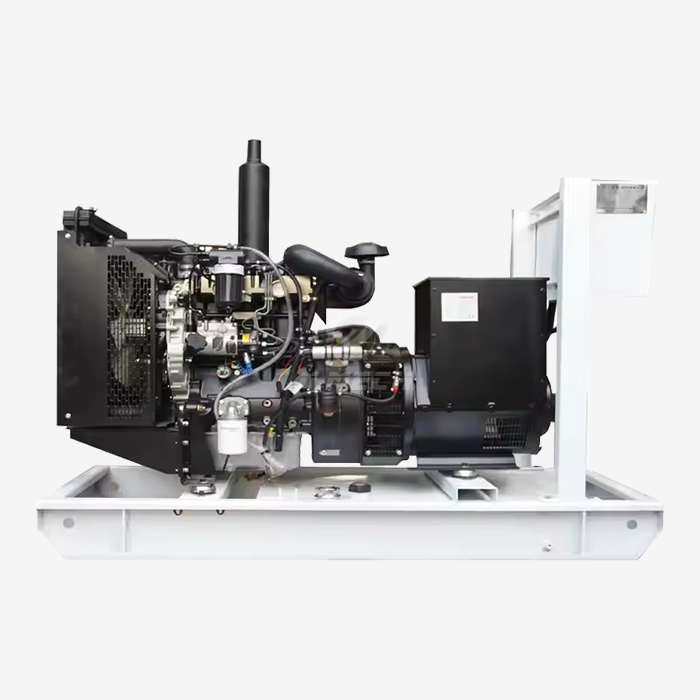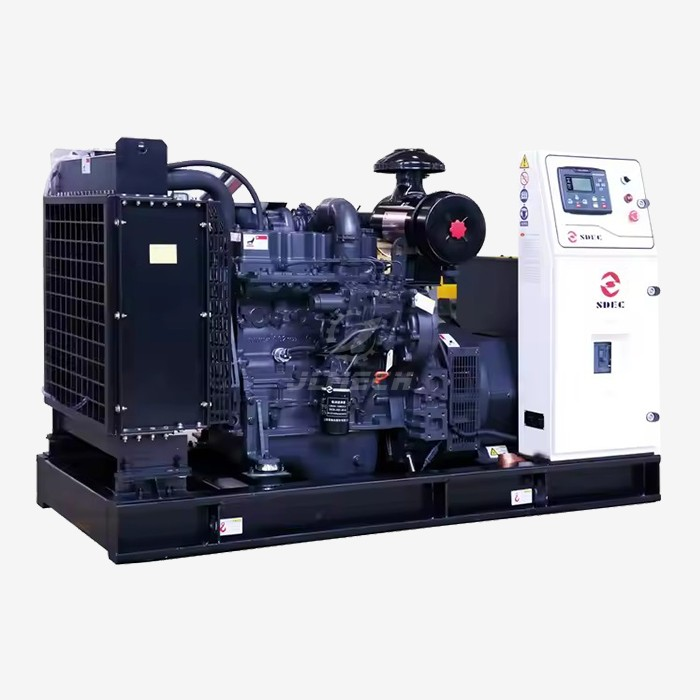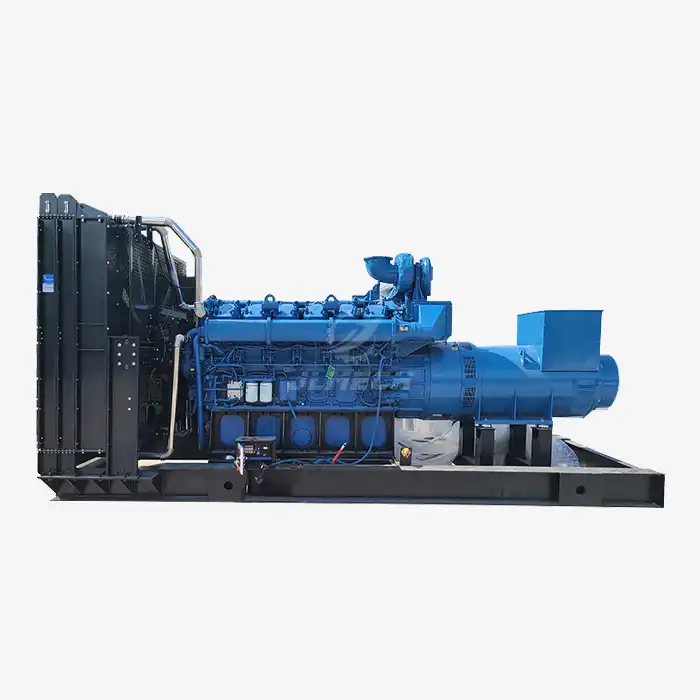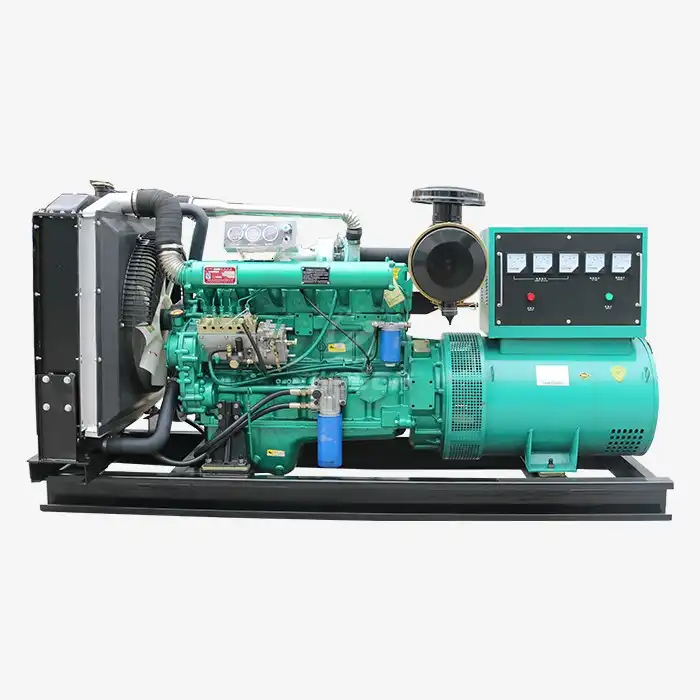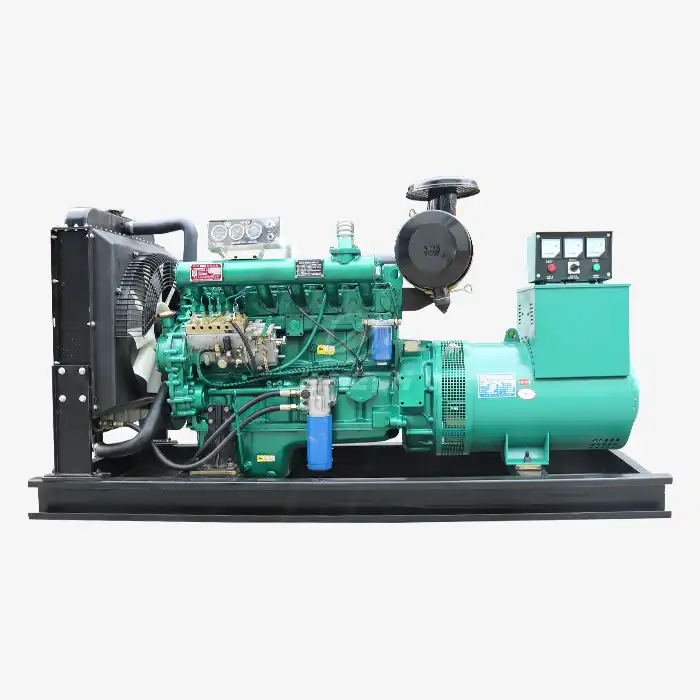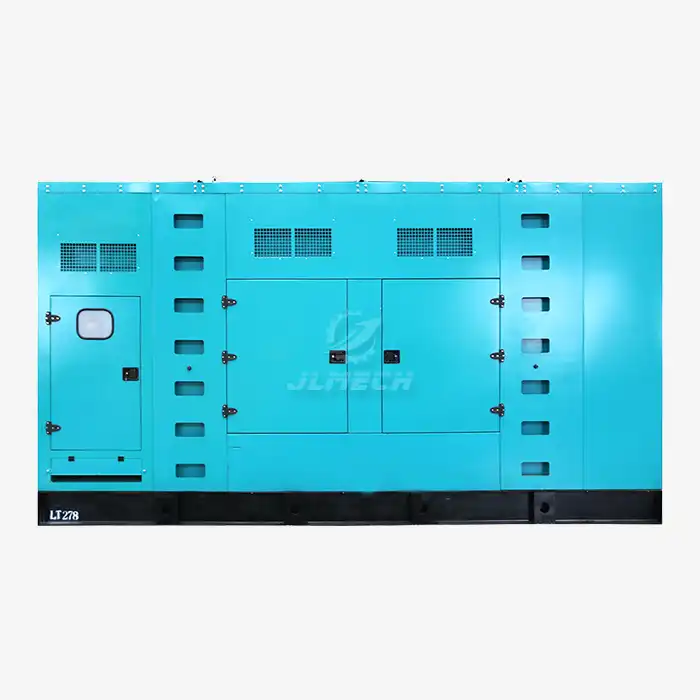What are the different types of enclosures for Gensets?
Selecting the appropriate enclosure is crucial for ensuring optimal diesel generator performance, extended longevity, and compliance with local regulatory requirements. Different operating environments necessitate specific protective solutions, making proper enclosure selection a critical aspect of generator system design. From basic weather protection to advanced acoustic management solutions such as a diesel generator sound attenuated enclosure, understanding the complete range of enclosure options ensures reliable generator operation across diverse settings and applications.
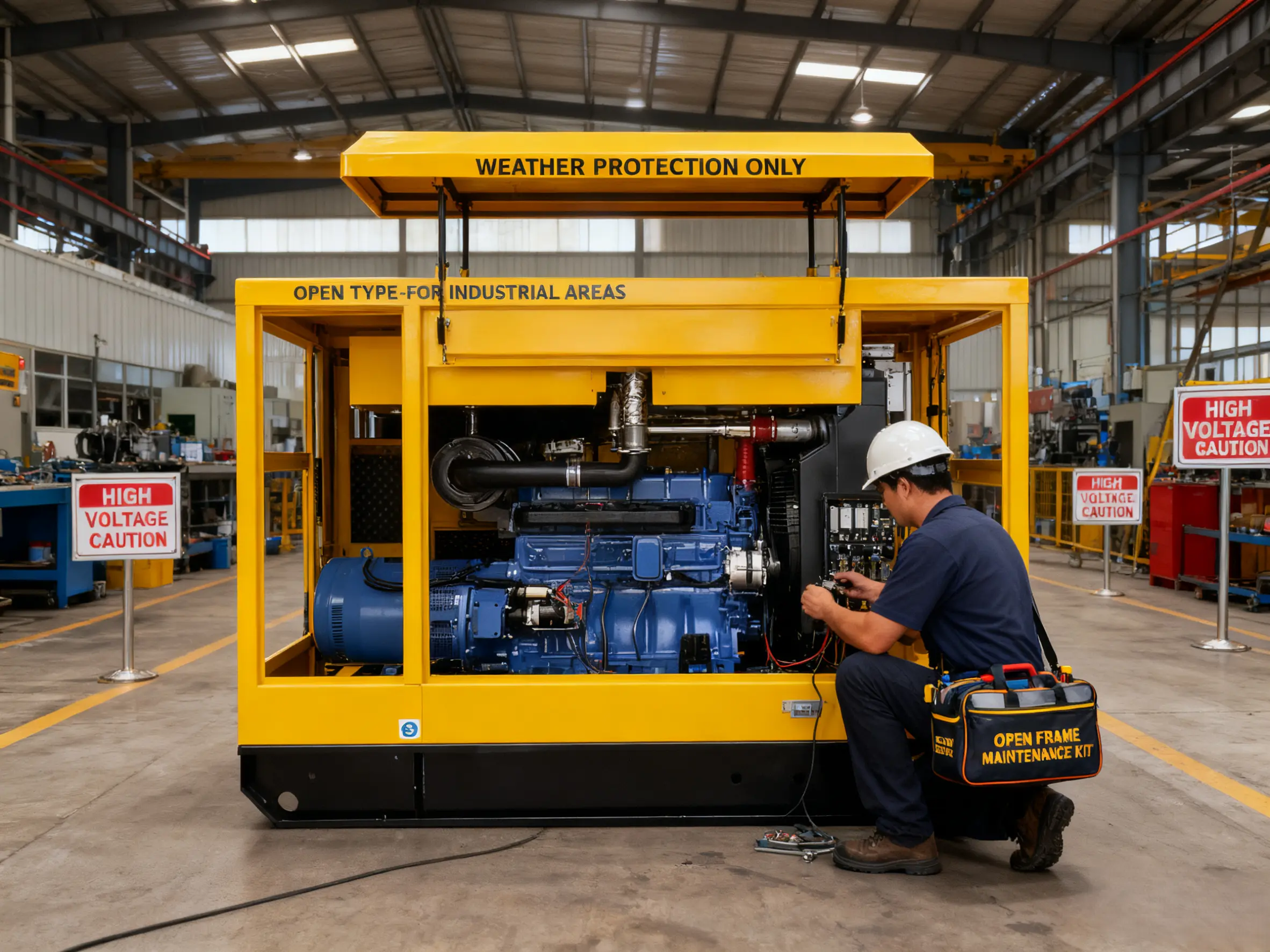
Basic Open Skid
The most fundamental enclosure type consists of a simple steel frame that supports the generator set without any surrounding panels.
Design Features: Minimal steel framework, no side panels or roofing
Protection Level: Provides only mounting support, no environmental protection
Best Applications: Indoor installations, protected environments, temporary setups
Cost Consideration: Most economical option
Limitations: No weather, noise, or vandalism protection
Open skid designs work exclusively in controlled environments where external factors won't affect generator operation.
Weatherproof/Canopy Enclosures
These enclosures provide full environmental protection while maintaining ventilation for proper generator operation.
Design Features: Full steel enclosure, weather-resistant seals, ventilation systems
Protection Level: Protects against rain, snow, dust, and moderate environmental conditions
Best Applications: Outdoor installations, industrial areas, construction sites
Noise Reduction: Minimal acoustic treatment (5-10 dBA reduction)
Additional Features: Often include maintenance doors, lifting points, and basic access panels
Weatherproof enclosures offer balanced protection for most standard outdoor applications without specialized acoustic requirements.
Sound Attenuated Enclosures
What is a Sound Attenuated Enclosure - These specialized systems significantly reduce operational noise through integrated acoustic engineering, making them essential for noise-sensitive environments. Advanced diesel generator sound attenuated enclosure designs incorporate multiple noise reduction technologies that allow generator operation in areas with strict noise regulations.
Design Features: Multi-layer acoustic insulation, specialized ventilation silencers, vibration isolation
Noise Reduction: Typically achieves 20-40 dBA noise reduction at 1 meter
Best Applications: Residential areas, hospitals, schools, urban locations
Technical Features: High NRC-rated acoustic lining, low-velocity fans, acoustic louvres
Compliance: Meets strict noise regulations and community requirements
These enclosures represent the optimal solution for maintaining community relations and regulatory compliance in noise-sensitive areas.
Explosion-Proof Enclosures
Designed for hazardous environments where flammable gases, vapors, or dust may be present.
Design Features: Sealed construction, explosion-proof components, pressure relief systems
Protection Level: Contains and prevents internal explosions from igniting external atmosphere
Certification Requirements: ATEX, IECEx, or other regional hazardous area certifications
Best Applications: Petroleum facilities, chemical plants, mining operations, grain processing
Safety Features: Spark-free ventilation, static electricity protection, flame arrestors
Explosion-proof enclosures require specialized engineering and certification for safe operation in hazardous environments.
Selection Guide: Choosing the Right Enclosure
Selecting the appropriate enclosure involves evaluating multiple factors:
Environmental Conditions: Assess weather patterns, temperature extremes, and potential exposure to elements
Noise Restrictions: Determine local noise regulations and community sensitivity to sound
Space Constraints: Consider available space and accessibility for maintenance
Budget Considerations: Balance initial investment with long-term operational needs
Future Requirements: Anticipate potential changes in location or operational needs
Consulting with enclosure specialists ensures the selected solution meets both current and future operational requirements while providing optimal protection for your investment.
Conclusion
Choosing the right generator enclosure requires careful consideration of operational environment, regulatory requirements, and performance needs. From basic open frames to advanced What is a Sound Attenuated Enclosure systems, each option provides specific benefits for different applications.
Our technical team can help you select the ideal enclosure solution for your specific requirements. Email skala@whjlmech.com for personalized generator enclosure recommendations.
References
Wilson, A. (2021). Generator Enclosure Systems: Design and Application. Power Engineering Journal, 42(3), 155-170.
Miller, R. (2020). Acoustic Engineering for Power Generation Equipment. Noise Control Engineering, 68(2), 89-104.
Johnson, M. (2022). Hazardous Area Protection for Diesel Generators. Safety Engineering Journal, 39(4), 245-260.
International Electrotechnical Commission. (2019). *IEC 60079-0: Explosive atmospheres - Part 0: Equipment - General requirements*. Geneva, Switzerland.



